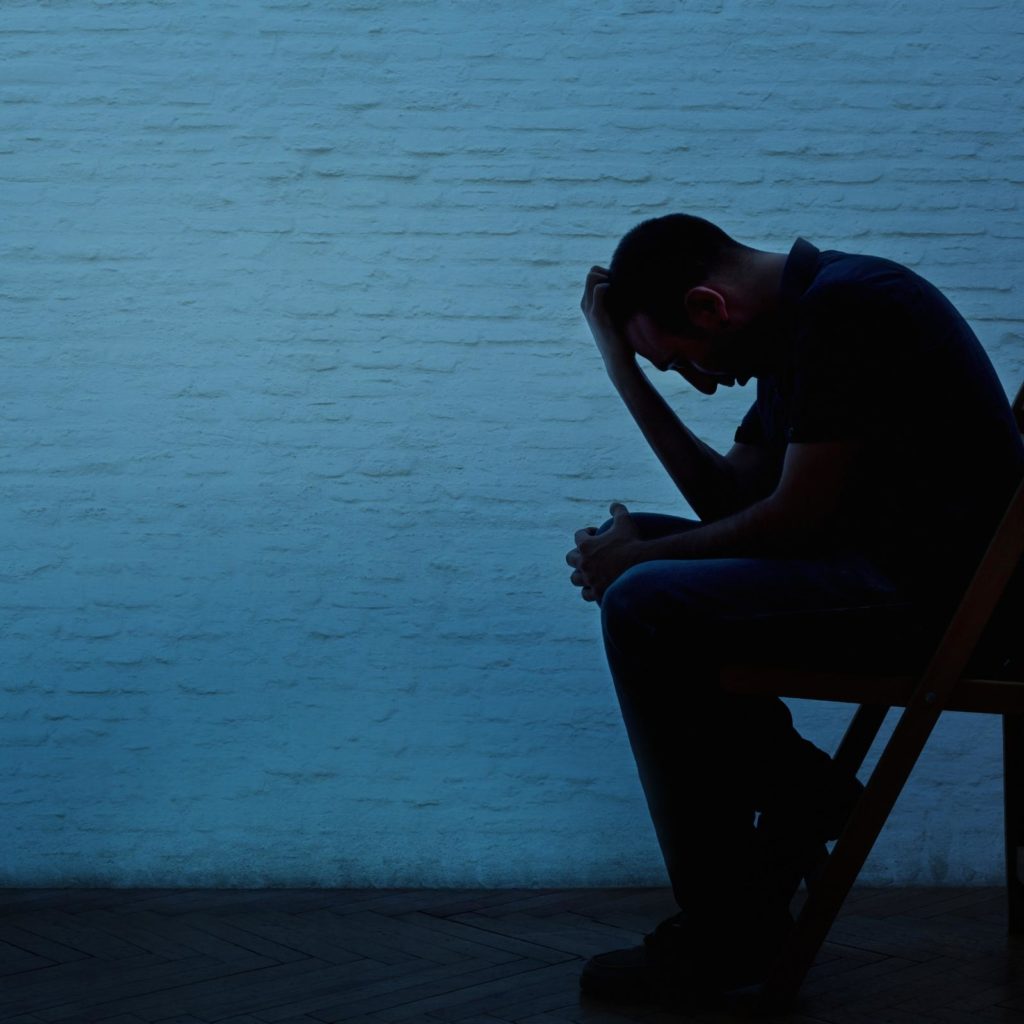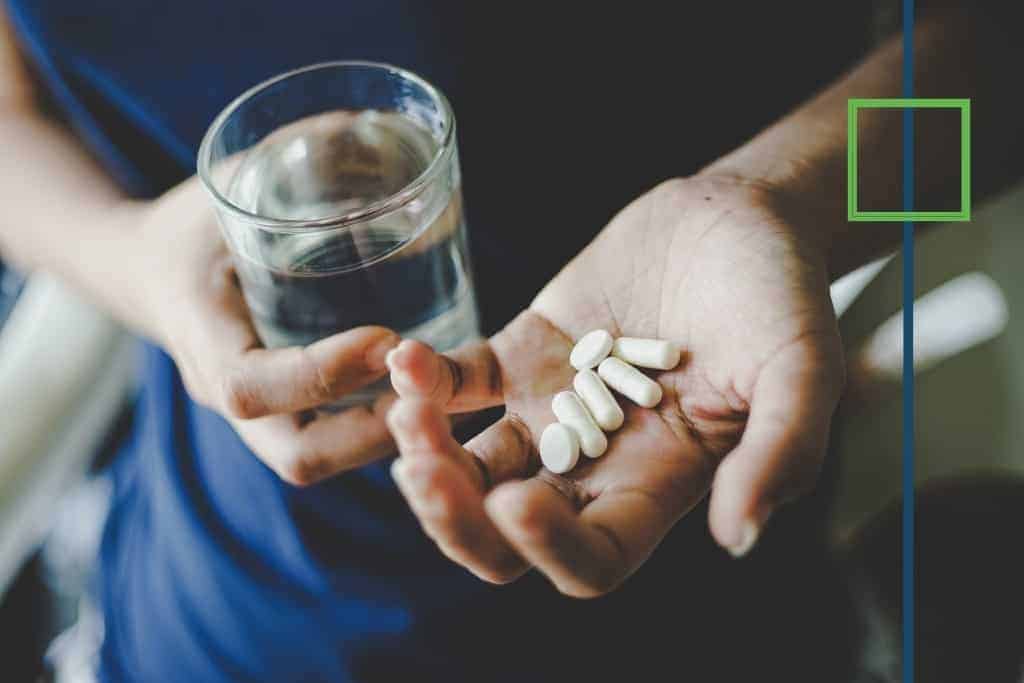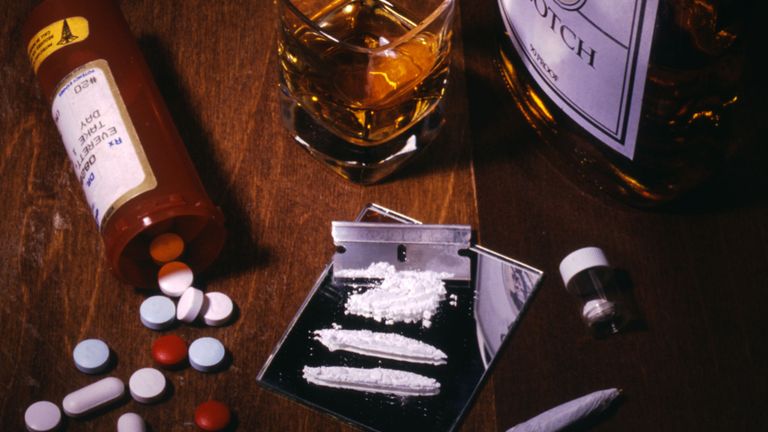Acute Opiate Withdrawal
Opiates contain opium, which is naturally derived from poppies. They fall under the category of opioids, a class of narcotic analgesics (highly potent and habit-forming painkillers). Opioids include illegal narcotics and pharmaceutical medications to treat severe and chronic pain. Many use the terms synonymously, as opiates and opioids are extremely addictive, dangerous, and potentially lethal.
Opiates refer to natural opioids such as heroin, morphine, and codeine. Opiates are chemical compounds that are refined or extracted from natural plant matter (poppy sap and fibers). Despite all of the associated negative aspects (overdose, addiction, crime, etc.), prescription opiates still have a positive intent. They are commonly prescribed for the treatment of moderate to severe pain. These drugs, along with heroin, attach to specific proteins called opioid receptors on nerve cells in the brain, spinal cord, GI tract, and other organs.
Acute opiate withdrawal symptoms are potentially life-threatening and manifest as a result of opiate dependence. Acute opiate withdrawal occurs when a person dependent on opiates suddenly reduces or stops taking the drugs. Trying to quit opiate “cold turkey” is difficult and dangerous to do on your own. For safety, it is best to seek the help of medically-assisted detox staff to overcome the acute opiate withdrawal symptoms safely and effectively.

Get Your Life Back
Find Hope & Recovery. Get Safe Comfortable Detox, Addiction Rehab & Dual Diagnosis High-Quality Care.
Hotline(844) 597-1011Acute Opiate Withdrawal Symptoms

Opiate withdrawal symptoms may be classified into two phases: an initial, acute phase, and a second chronic phase with signs of protracted opiate withdrawal. Typically, the initial withdrawal symptoms, such as anxiety, agitation, dysphoria, insomnia, and temperature instability, are evaluated and quantified in the acute-care setting.
What causes opiate withdrawal symptoms? If someone is dependent on or addicted to one particular opiate or opioid drug, whether it’s illicitly obtained or medically prescribed, they may find that switching to a different opiate can help maintain their dependency or addiction. That is, substituting one opiate for another may help prevent withdrawal symptoms. Most of us have heard stories of individuals with real pain who became dependent on prescription pain-relieving narcotic drugs, then switched to illicit opioids or opiate heroin when the medically supplied narcotics ran out.
Prolonged use of these drugs changes how nerve receptors work in your brain, and these receptors become dependent upon the drug to function. If you become physically sick after stopping opiates, it may indicate that you’re physically dependent on the substance. Opiate withdrawal symptoms are the body’s physical response to the absence of the drug. Many people become dependent on opiates to avoid pain or opiate withdrawal symptoms. Unfortunately, in some instances, individuals don’t even realize that they’ve become dependent. Instead, they may mistake opiate withdrawal for flu symptoms or another condition.
Early opiate withdrawal symptoms typically begin in the first 24 hours after the user stops taking the drug, and they include:
- Muscle aches
- Restlessness
- Anxiety
- Lacrimation (eyes tearing up)
- Runny nose
- Excessive sweating
- Inability to sleep
- Yawning very often
Later symptoms, which can be more intense, begin after the first day or so. They include:
- Diarrhea
- Abdominal cramping
- Goosebumps on the skin
- Nausea and vomiting
- Dilated pupils and possibly blurry vision
- Rapid heartbeat
- High blood pressure
Although painful and very unpleasant, opiate withdrawal symptoms usually start to improve within 72 hours, and within a week you should notice a significant decrease in the acute symptoms of opiate withdrawal.
Infants born to mothers who are addicted to or have used opiates while pregnant often experience withdrawal symptoms as well. These may include:
- Digestive issues
- Poor feeding
- Dehydration
- Vomiting
- Seizures
It’s essential to remember that different drugs remain in users’ systems for different lengths of time, affecting opiate withdrawal onset. The amount of time the symptoms last depends on the frequency of use and severity of the addiction and individual factors like overall health.
For instance, heroin is typically eliminated from the system faster, and opiate withdrawal symptoms will start within 12 hours of last use. On the other hand, if a person is on methadone, it may take a day and a half for opiate withdrawal symptoms to begin.
Some specialists point out that opiate addiction recovery requires at least six months of total abstinence, during which the individual may still experience symptoms of opiate withdrawal. This is sometimes referred to as “protracted abstinence.”

Get Help. Get Better. Get Your Life Back.
Searching for Accredited Drug and Alcohol Rehab Centers Near You?
Even if you have failed previously and relapsed, or are in the middle of a difficult crisis, we stand ready to support you. Our trusted behavioral health specialists will not give up on you. When you feel ready or just want someone to speak to about therapy alternatives to change your life call us. Even if we cannot assist you, we will lead you to wherever you can get support. There is no obligation. Call our hotline today.
(844) 597-1011Opiate Withdrawal Restlessness (RLS)
What is opiate withdrawal restless leg? Restless Leg Syndrome (RLS) is a neurological condition that causes overwhelming urges to move the legs. It is a serious cause of chronic insomnia, affecting more than 7 million Americans – and it’s also frequently a symptom of opiate withdrawal. While not life-threatening, restless leg syndrome is uncomfortable and irritating, as are the other symptoms of opiate withdrawal. Restless leg syndrome during opiate withdrawal may be particularly unpleasant due to other withdrawal symptoms. An individual may be experiencing anxiety, nausea, intense sweating and runny nose, and a number of other symptoms along with RLS.
There are two kinds of RLS opiate withdrawal:
- Idiopathic – primary condition without a known cause.
- Secondary – caused by another medication or condition (such as when caused by opiate discontinuation.
Symptoms and Features of RLS include:
- Irresistible urges to move the legs. Legs feel creepy-crawly.
- Symptoms typically get worse as you lay at rest and worsen as your rest deepens and lengthens.
- Symptoms go away when you move your legs – but only for so long as you continue to move.
- Symptoms cause significant sleep disruption and affect energy levels and mood.
Fentanyl Withdrawal Restless Legs
Fentanyl is an opioid analgesic. Specifically, transdermal fentanyl is a well-used and highly effective form of opioid analgesia for individuals suffering from severe chronic pain. It is also an opioid that is widely abused and results in significant withdrawal symptoms. Fentanyl withdrawal can lead to restlessness, nausea, vomiting, sweating, diarrhea, and myoclonus, all in addition to RLS.
There has been a report of a 58-year-old male with fentanyl patch withdrawal-induced RLS. He utilized the patch for two months after having surgery on his right shoulder. After the discontinuation of the patch, he complained of severe insomnia. He experienced an unpleasant sensation in both legs that was aggravated in the nighttime, and which could only be improved only by moving his legs. The patient thus met all the diagnostic criteria for RLS.
He readministered the patch because of his insomnia, after which his RLS symptoms disappeared. His RLS symptoms repeatedly recurred whenever he stopped using the patch. His orthopedic surgeon then referred him for psychiatric consultation. The patient had no disease related to secondary RLS. He was also taking no medication except for the patch. Finally, his RLS symptoms disappeared following the commencement of ropinirole/clonazepam therapy.
First-class Facilities & Amenities
World-class High-Quality Addiction & Mental Health Rehabilitation Treatment
Rehab Centers TourRenowned Addiction Centers. Serene Private Facilities. Inpatient rehab programs vary.
Addiction Helpline(844) 597-1011Proven recovery success experience, backed by a Team w/ History of:
15+
Years of Unified Experience
100s
5-Star Reviews Across Our Centers
10K
Recovery Success Stories Across Our Network
- Low Patient to Therapist Ratio
- Onsite Medical Detox Center
- Comprehensive Dual-Diagnosis Treatment
- Complimentary Family & Alumni Programs
- Coaching, Recovery & Personal Development Events
Tramadol Restless Legs Syndrome
Tramadol is a synthetic 4-phenyl-piperidine analog of codeine and is a central analgesic mediated by a combination of mu-opioid agonist effects and norepinephrine and serotonin reuptake inhibition. Tramadol (Ultram) is used to relieve moderate to moderately severe pain. It changes how the brain and nervous system respond to pain. Long-term use can lead to withdrawal symptoms if someone suddenly stops taking tramadol. The symptom usually begins 6-12 hours after the last dose and lasts about 5-7 days. Tramadol detox centers and rehab programs can treat withdrawal symptoms and manage medical complications.
Tr tramadol withdrawal symptoms are anxiety and restlessness, autonomic dysfunction, abdominal cramping, diarrhea, sleeplessness, migraine-like headaches, and myoclonic activity of the extremities. There are also reports of RLS as a complication of withdrawal from opiates such as methadone, heroin, fentanyl, and tramadol.
Oxycodone Withdrawal Restless Legs Syndrome
Oxycodone is an alternative treatment option for RLS as a semisynthetic opioid. The κ-opioid and the μ-opioid receptor mediate its analgesic effect, but this has not been confirmed. Oxycodone withdrawal-induced RLS has also been reported as follows. A 42-year-old male patient was medicated with an analgesic (oxycodone 60 mg bid) for ten weeks with embolization because of a hepatocellular carcinoma rupture and hematoperitoneum with pain. Thereafter, his pain was relieved, and he arbitrarily stopped taking the oxycodone.
Seven days later, he complained of a tickling sensation in both his legs. This sensation began in the evening and became increasingly aggravated until midnight. These symptoms worsened at rest and were mitigated only when he moved his legs. His symptoms satisfied all the diagnostic criteria for RLS. The severe abdominal pain recurred, and he restarted taking the oxycodone at his discretion. The irresistible and tickling sensations in both his legs then dramatically disappeared.
Kratom Withdrawal Restless Leg Syndrome – RLS Kratom Withdrawal
What is kratom withdrawal restless legs? Some people have restless leg syndrome (RLS), a disorder that is characterized by an almost indescribable urge to move their legs when they are going through opioid withdrawal. RLS can happen to persons who are not misusing opioids, although some studies have indicated that overuse of opioids will make RLS worse for those who are going through opiate withdrawal.
Suboxone Withdrawal Restless Legs
When someone rapidly stops taking opioids for chronic pain or stops abusing opioids, they frequently get RLS symptoms. While RLS symptoms are often temporary, there have been reports of protracted cases where they are brought on by abrupt withdrawal but last for weeks or months, occasionally refractory to standard therapy. The breakdown of dopamine homeostasis in multiple regions of the brain, notably regions linked to reward and impulsivity, is the cause of the correlation between opioid withdrawal symptoms and RLS symptoms.
The symptoms of RLS connected to opioid withdrawal are typically transient, thus they do not fit the criteria for RLS, a chronic, frequently progressive illness. Treatment for RLS caused by opiate withdrawal need not be different from treatment for RLS caused by other causes. However, using opioids, especially buprenorphine (Suboxone, Zubolv, Bunavail), unless contraindicated, is quite beneficial.
Adderall Withdrawal Restless Legs
Anyone who stops using stimulants, regardless of the type, runs the risk of developing amphetamine withdrawal psychosis. The brain’s ability to produce dopamine is impacted by the absence of stimulant medication. The withdrawal phase can be unpredictable and harmful. If someone anticipates a protracted detox process, they should think about going to rehab. The signs of amphetamine-induced psychosis and amphetamine withdrawal have many of the same symptoms. However, since sleep issues like insomnia and restless legs syndrome are frequently experienced in the initial phases of detox, it’s possible that amphetamine withdrawal psychosis symptoms will worsen.

Heroin Addict Restless Legs Syndrome
Heroin is an addictive drug made from morphine. It has been used as a recreational drug and is often abused. Heroin withdrawal-induced RLS has also been reported as follows. A 34-year-old male patient with a five-year history of heroin addiction. Two days after he discontinued his use of heroin, he complained of all four of RLS’s diagnostic symptoms. L-dopa and subsequent naltrexone treatment were then utilized to relieve his RLS symptoms and heroin addiction.
In another study, 19 patients with opioid dependence, who were admitted to a hospital for detoxification, were enrolled. After abstaining from opioids, 10 of the 19 patients developed RLS symptoms. Six of these 10 patients had taken heroin, with the rest of them having taken dextropropoxyphene (n=2), tramadol (n=1), pentazocine (n=1), and crude opium (n=1). Their RLS symptoms appeared after a mean of 1.7 days following their ceasing their use of opioids. Pregabalin leads to significant improvement in their RLS symptoms and overall sleep quality.
World-class, Accredited, 5-Star Reviewed, Effective Addiction & Mental Health Programs. Complete Behavioral Health Inpatient Rehab, Detox plus Co-occuring Disorders Therapy.
CALL(844) 597-1011End the Addiction Pain. End the Emotional Rollercoaster. Get Your Life Back. Start Drug, Alcohol & Dual Diagnosis Mental Health Treatment Now. Get Free No-obligation Guidance by Substance Abuse Specialists Who Understand Addiction & Mental Health Recovery & Know How to Help.
How Long Does Restless Leg Syndrome Last From Opiate Withdrawal?
The symptoms of opiate withdrawal-induced RLS dissipate with the other symptoms of withdrawal. The physical symptoms of withdrawal only last up to a week, while the psychological symptoms such as anxiety and irritability, can last for months. RLS’s symptoms appear both physical and psychological and can last for several weeks, or the duration of the psychological symptoms of opiate withdrawal.
How To Help Restless Legs During Opiate Withdrawal?
Because opiate withdrawal RLS tends to dissipate within days or weeks, your doctor may be reluctant to prescribe the serious medications typically recommended for RLS, such as dopamine agonist Parkinson’s medications.
However, some medications commonly prescribed to treat other opiate withdrawal symptoms can also help reduce the severity of RLS.
Ask your doctor about:
- Clonidine: Some people find that clonidine reduces RLS severity. Clonidine is a hypertension medication that’s very commonly prescribed to reduce anxiety, agitation, muscle aches, sweating, runny nose, and cramping of opiate withdrawal.
- Benzodiazepines: Benzos like clonazepam or valium can help you fall and stay asleep and are a recommended (though not first-line) treatment for RLS. These medications can also reduce the anxiety and agitation of opiate withdrawal. Because of the high dependence risk, it’s not advisable to take benzodiazepines for more than 5 days or so when treating opiate withdrawal.
- Baclofen: This drug is sometimes recommended as a temporary treatment for opiate withdrawal-induced RLS. It may relieve the severity, though not the frequency of symptoms. (Note – the RLS foundation does not recommend baclofen due to insufficient evidence of efficacy and concerns over side effects.)
Opiate Addiction Detox Treatment
Opiate addiction is a chronic disease and should be treated like other chronic diseases. Like those, it should constantly be monitored and managed. Opiate addiction treatment is different for each individual. The main purpose of opioid addiction treatment is to help the person stop using the drug. Opiate addiction treatment can also help the person avoid using it again.
The body goes through specific symptom stages known as the opioid withdrawal timeline. The opioid withdrawal timeline varies from a few days to a few weeks, depending on the type of opioid used, how long it was used, and any other substances that may have been used in conjunction with opioids. Medically managed withdrawal opioid detox ensures the individual remains safe and stays as comfortable as possible.
Detox Treatment
The first step in treatment is medical detox. It will help you navigate the complicated withdrawal process but doesn’t address patterns of thought and behavior contributing to heroin abuse. Various treatment approaches and settings can help provide the ongoing support necessary to maintain long-term sobriety after you complete detox.
Cravings are very common during detox and can be challenging to overcome. This often leads to relapse. Constant medical care provided during inpatient treatment helps prevent relapse. Clinicians can provide necessary medication and medical expertise to lessen cravings and the effects of withdrawals.
Psychotherapy
Several different modalities of psychotherapy have been used in the treatment of depression, including:
- Cognitive Behavioral Therapy (CBT) – is an effective treatment that involves changing both the patterns of negative thoughts and the behavioral routines which are affecting the daily life of the depressed person for various forms of depression.
- Dialectical Behavior Therapy – is a comprehensive mental health and substance abuse treatment program whose ultimate goal is to aid patients in their efforts to build a life worth living. The main goal of DBT is to help a person develop what is referred to as a “clear mind.”
- Person-Centered Therapy – is a strategy that allows and encourages clients to understand and resolve their concerns in a safe, supportive environment.
Dual Diagnosis Treatment
Substance abuse and mental health disorders often co-occur. In many cases, traumatic experiences can result in mental health disorders and substance abuse. Dual diagnosis programs treat both of these issues together. The best approach for the treatment of dual diagnosis is an integrated system. This strategy treats both the substance abuse problem and the mental disorder simultaneously. Regardless of which diagnosis (mental health or substance abuse problem) came first, long-term recovery will depend largely on the treatment for both disorders done by the same team or provider.
Medication-Assisted Treatments
Medication-Assisted Treatments (MAT) for substance use and mental health disorders are commonly used in conjunction with one another. This includes the use of medications and other medical procedures. During your rehab, the staff from your treatment facility will help you identify what caused your addiction and teach you skills that will help you change your behavior patterns and challenge the negative thoughts that led to your addiction. Sometimes, the pressures and problems in your life lead you to rely on substances to help you forget about them momentarily.
Now that we learned about opiate withdrawal restlessness, hopefully, this will give you an idea of what drugs you’re dealing with. If you or your loved one is suffering from Opioid withdrawal symptoms and addictions and at some point experienced opioid overdose symptoms, help is just a phone call away. Professional opioid addiction treatment is necessary for fast and effective recovery. Contact us today at We Level Up treatment facility. We provide the utmost care with doctors and medical staff available 24/7 for life-changing and lasting recovery. We offer an enhanced opportunity to return to a fulfilling and productive life.

FAQ Section
How long does RLS last during withdrawal?
Opiate withdrawal-related RLS is often transient and will go away with time; however, if you or a loved one is exhibiting symptoms that are keeping them up at night, speak with your doctor or treatment provider right once. You don’t have to give up sleep because you decided to receive OUD treatment.
What helps with restless legs while withdrawal?
Your doctor might be hesitant to propose the serious drugs generally suggested for RLS, such as dopamine agonist Parkinson’s meds because opiate withdrawal RLS typically goes away within a few days or weeks. The intensity of RLS can, however, be lessened by taking some drugs that are frequently used to treat other opiate withdrawal symptoms.
Experience Transformative Recovery at We Level Up Treatment Centers.
See our authentic success stories. Get inspired. Get the help you deserve.
Start a New Life
Begin with a free call to an addiction & behavioral health treatment advisor. Learn more about our dual-diagnosis programs. The We Level Up Treatment Center Network delivers recovery programs that vary by each treatment facility. Call to learn more.
- Personalized Care
- Caring Accountable Staff
- World-class Amenities
- Licensed & Accredited
- Renowned w/ 100s 5-Star Reviews
We’ll Call You
Sources
[1] NIH – https://medlineplus.gov/ency/article/000949.htm
[2] Alcohol and Drug Policy Commission – https://www.oregon.gov/adpc/pages/opiate-opioid.aspx
[3] CDC – https://www.cdc.gov/opioids/basics/terms.html
[4] Opiate Withdrawal – We Level Up NJ




